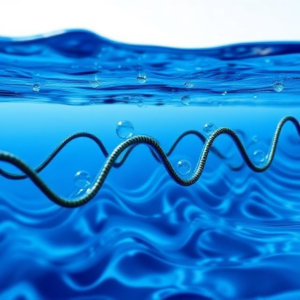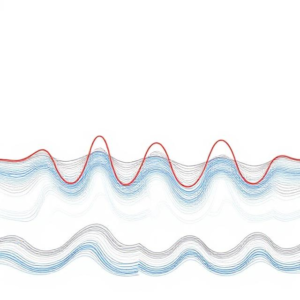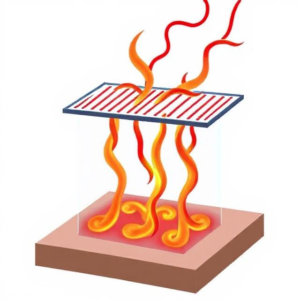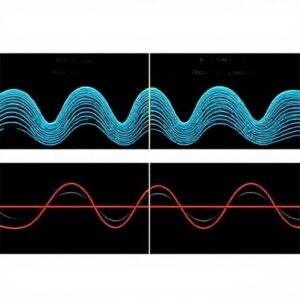What are Mechanical Waves?
A mechanical wave is a type of wave that needs a medium (like air, water, or a solid material) to travel through. These waves move by causing particles in the medium to vibrate and pass energy from one place to another.
Imagine you throw a stone into a pond. The water moves in ripples, transferring energy from the stone to the surrounding water. The ripples are an example of a mechanical wave.

Two Main Types of Mechanical Waves
There are two types of mechanical waves: transverse waves and longitudinal waves. The difference between them has to do with how the particles in the medium move.
1. Transverse Waves
In transverse waves, the particles of the medium move up and down (or side to side) perpendicular to the direction the wave is traveling.
How They Work:
- If the wave is moving from left to right, the particles of the medium move up and down.
- You can imagine it like a rope. If you shake one end of a rope up and down, waves travel along the rope in the direction of the shaking.
- These waves travel through solids, liquids, and gases. However, they work best in solids because solids are stiffer and can move more easily in an up-and-down motion.
Example:
- Light waves are transverse waves, but they’re not mechanical (they don’t need a medium to travel).
- A wave on a string (like shaking one end of a rope) is a classic example of a transverse wave.
Key Parts of Transverse Waves:
- Crest: The highest point of the wave.
- Trough: The lowest point of the wave.
- Wavelength: The distance from one crest to the next crest, or from one trough to the next trough.
- Amplitude: The height from the resting position (middle) to the crest (or trough).
2. Longitudinal Waves
In longitudinal waves, the particles of the medium move back and forth in the same direction the wave is traveling. This means the particles compress and expand as the wave moves.
How They Work:
- Imagine you push a slinky or spring. If you push one part, the coils of the slinky compress and then stretch apart in the same direction as the push. That’s how a longitudinal wave works: the particles move forward and backward along the direction the wave is traveling.
Example:
- Sound waves are longitudinal waves. When you speak or make a sound, your voice causes the air particles to compress and spread out in the same direction that the sound is moving.
- Seismic waves (earthquakes) also have longitudinal components, where the earth shakes back and forth.
Key Parts of Longitudinal Waves:
- Compression: The part of the wave where particles are squished together.
- Rarefaction: The part of the wave where particles are spread apart.
- Wavelength: The distance between two compressions or two rarefactions.
- Amplitude: The degree of compression or rarefaction.
Key Differences Between Transverse and Longitudinal Waves
| Feature | Transverse Waves | Longitudinal Waves |
|---|---|---|
| Particle Movement | Particles move up and down (perpendicular to the wave’s direction) | Particles move back and forth (parallel to the wave’s direction) |
| Example | Waves on a rope, light waves, water waves | Sound waves, slinky waves, seismic waves |
| Medium | Can travel through solids, liquids, and gases, but work best in solids | Travel through solids, liquids, and gases |
| Direction of Energy | Energy moves in the direction of the wave | Energy moves in the same direction as particle motion |
Summary
- Mechanical waves need a medium (like air, water, or a solid) to travel through.
- Transverse waves: Particles move up and down or side to side in relation to the direction of the wave (e.g., waves on a rope or water waves).
- Longitudinal waves: Particles move back and forth in the same direction the wave travels (e.g., sound waves or seismic waves).











